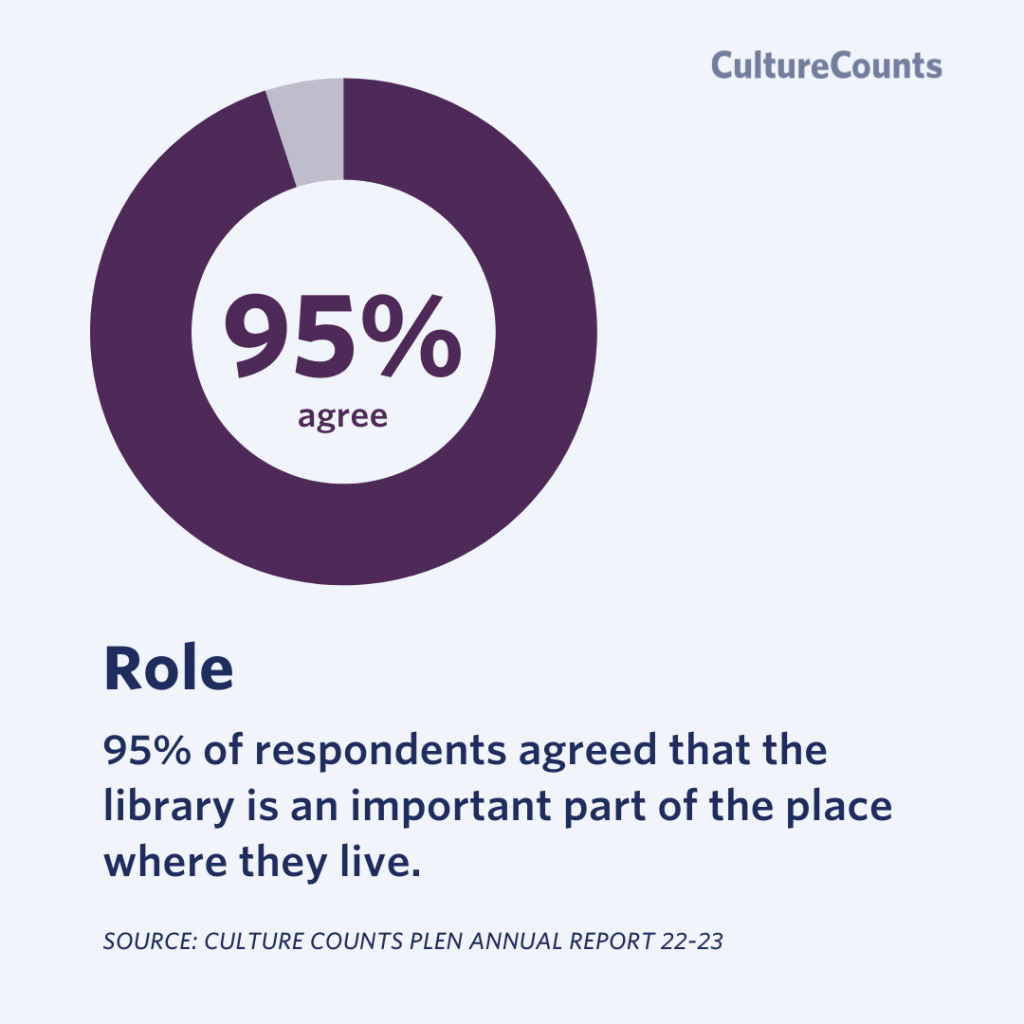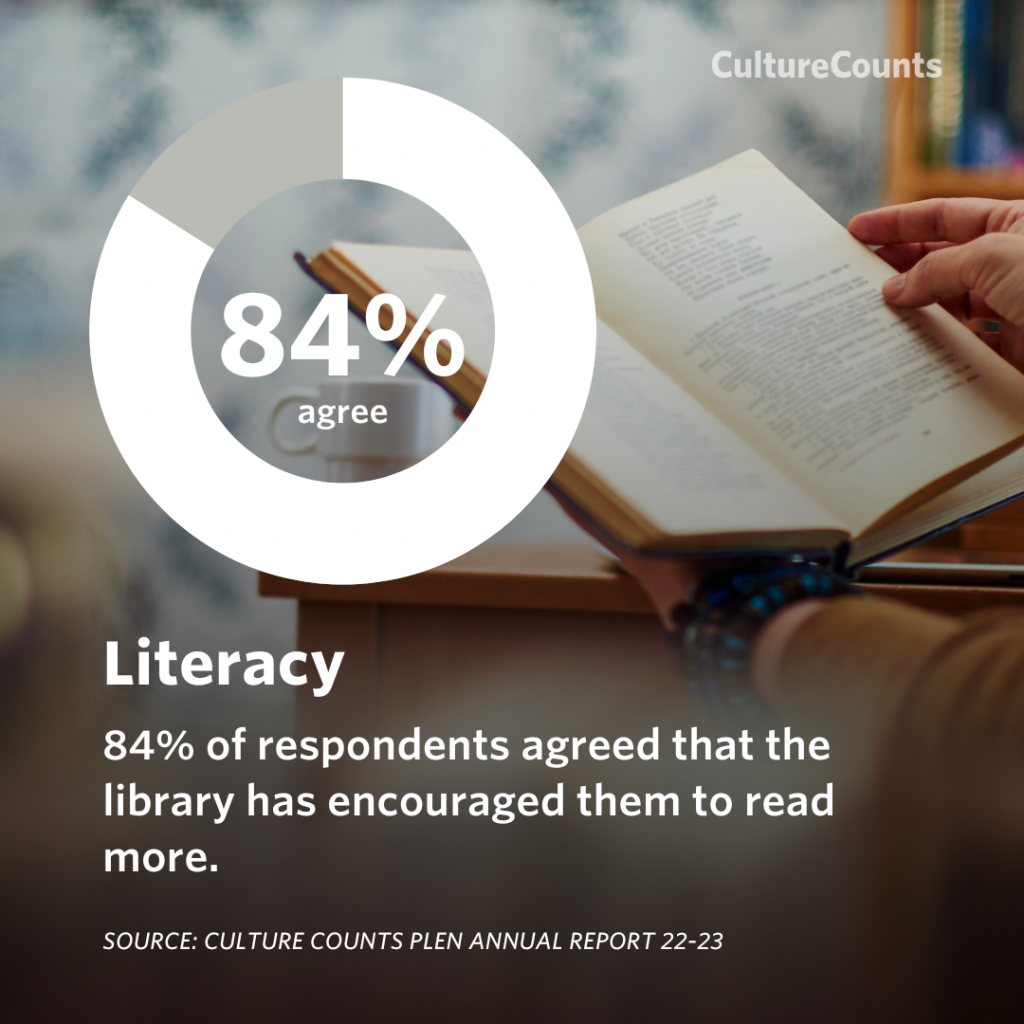Libraries bring multifaceted value to their communities that go beyond being repositories of books. They are an extremely important asset, with membership numbers and lending statistics only addressing a small part of their value.
Measuring the role of libraries and the value that communities place on them gives libraries the ability to engage more deeply with the public, impact the community more strongly, and provide an evidence-based argument for greater funding.
So, how can libraries use data to tell a better story of their impact? This blog article provides some tips to help get you started.
Collect outcome-based data
Libraries can showcase their value to key stakeholders including local councils and the wider community by leveraging outcomes-based data.
What are outcomes?
Outcomes are the changes that result from taking part in a program/activity or using a service, e.g. connection to community and skills development. For more information about outcomes, visit our Support Hub.
We have put together a short list of outcomes that libraries play a role in generating for their communities. Measuring these outcomes can help libraries demonstrate the impact of their activities. These metrics (and others) are used in our standardised library survey templates as part of the Public Libraries Evaluation Network.
- Community Engagement: Libraries foster community engagement by encouraging participation in community activities and creating a sense of belonging.
- Adaptability to Community Needs: Libraries demonstrate flexibility in responding to changing community needs, particularly in digital services and resources.
- Supporting Literacy: They play a critical role in enhancing literacy and encouraging reading among all age groups, contributing to lifelong learning.
- Economic Development: By providing resources for business development and job skills training, libraries contribute to the economic prosperity of the community.
- Safe and Trusted Spaces: Libraries offer a welcoming and safe environment for all community members, which is crucial for fostering a strong sense of community trust.
- Cultural Contribution: Libraries serve as cultural hubs, offering access to diverse cultural programs and resources.
- Health and Wellbeing Support: They offer programs and resources that contribute to the mental and physical health of community members.
Communicate your value
Sharing results with stakeholders, policy-makers, communities and peers is an important part of celebrating a library’s role and impact. Here are a few ways to communicate value using insights gained from data.
Publish your feedback via Enews
Enews is a great way to communicate directly to your audience, including users and members of the library.
The City of Albany Library had collected feedback on their outcomes, performance and usage via the Culture Counts standardised PLEN survey templates. They highlighted a key social outcome achievement to their members with a message in their monthly Enews.
“It was heart-warming to note that 94% of people surveyed consider the library to be a safe and trusted place as well as playing a significant role in community life. This is a wonderful finding, especially in unsettling times, when connection to safe community spaces is critical to wellbeing.” View the newsletter here.
Share your achievements across social media
This can be an effective way to tell a value story to a wider audience, including key stakeholders, the community, and council.
To celebrate Library & Information Week, Yarra Libraries provided a snapshot of statistical and outcome-based achievements on LinkedIn, using their findings to build stronger narratives around their performance indicators.
“These impressive figures reflect just how much our community love and value our services, and are a testament to the dedication of our hard-working librarians and broader library team.” View the post here.
Compare with industry benchmarks
The ability to compare with library benchmarks can provide useful context to your own results. Without knowing how other libraries are performing, it can be difficult to report on the success of your community’s engagement levels, perceptions, or outcomes. Benchmarks can help you set targets, and learn tangible strategies for change from others.
Add deeper context with benchmark reports
Industry reports can be a powerful way to increase understanding, learn from others, set appropriate KPIs, and improve your impact.
Each year, Culture Counts publishes the Public Libraries Evaluation Network Annual Report. The report is curated from the survey responses collected by the network across the nation-wide data collection initiative.




The report can also be a useful tool to share with internal stakeholders and funding bodies – highlighting the vital impact of libraries, alongside trends and key achievements nationally. View the report.
Find out more
For more tips and tricks, download our Library Evaluation Guide here. Are you interested in participating in the Public Libraries Evaluation Network? Contact us here to organise a free demo with the friendly Client Team.






